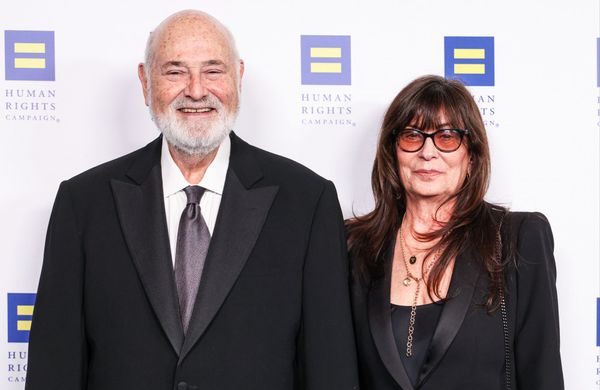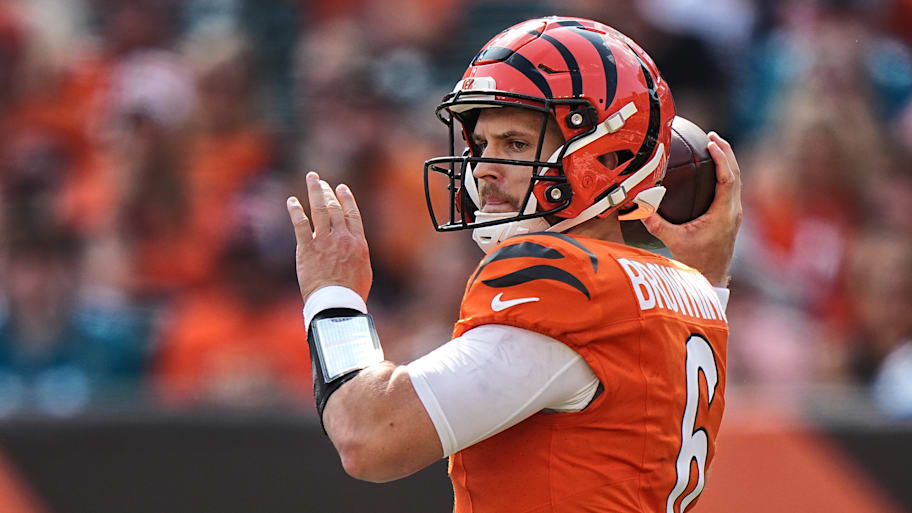
It was a wildly fun Sunday in the NFL in a lot of ways, but we’re starting the Week 2 takeaways on a more somber note …
Cincinnati Bengals
Jake Browning at least gives the Bengals a chance. And to be clear, that doesn’t mean this is a great place for Cincinnati to be. Obviously, Zac Taylor’s crew would always be better off with a fully healthy Joe Burrow, over just about any other option at quarterback.
More so, this is about the silver lining in not having had that nearly as much as they’d like to of late. The Bengals are prepared to go without Burrow, because they’ve had to so often.
Verderame: The Good, Bad and Ugly | Orr: Travis Kelce’s future with the Chiefs | Manzano: What We Learned in Week 2 | Orr: Cowboys, Giants Treat Us to a Beauty
And that’s where Browning enters the picture. The 29-year-old is now in his fifth season as a Bengal, having spent all those years under Taylor and behind Burrow. Sunday’s game against the Jaguars was the 13th he’s played in, with nine of them, and all of seven of his starts, coming during the 2023 season.
All this is relevant because of how Burrow’s foot twisted underneath Jaguars defensive lineman Arik Armstead in the second quarter Sunday. Doctors fear he has Grade 3 turf toe—which is code for torn ligaments in his toe—and will need surgery that would put him out until mid-December at the earliest. He’ll get second opinions, but even a rosy prognosis would keep Burrow off the field deep into October.
If Burrow is lost for the season, the Bengals are probably cooked. But if it’s less than that, we’ve already seen Browning’s ability to hold a team in the playoff race—he did it for the Bengals just two years ago, when he won four of his seven starts. We saw it, in fact, on Sunday, in how resilient Browning was while leading Cincinnati to a win over Jacksonville in a 31–27 thriller.
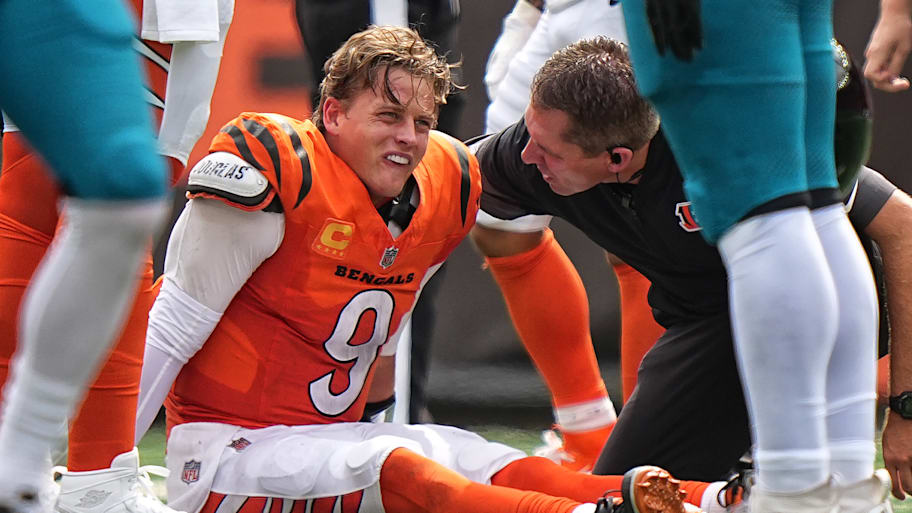
Browning, by the way, threw three picks in the game. So he wasn’t perfect. Which is fine because the Bengals wouldn’t ask him to be.
“Preparing without taking reps is a challenge,” he said, from the winning locker room. “My most recent game wasn’t too long ago. The way the NFL works is preparing the starting quarterback to be ready, and it’s on the backup to stay ready. If you get to Sunday and you aren’t prepared …”
Then that, of course, is on you.
And because Browning was, not much caught him off-guard Sunday. One thing that did, though, came to life at a pretty critical point. With 5:22 left in the game, Jags linebacker Devin Lloyd was aggressive in covering receiver Andrei Iosivas on a choice route, and made a spectacular play on the ball to take it away at the Bengals’ 34. Up 27–24 and getting the ball back at the Bengals’ 12, the Jaguars seemed poised to close Cincinnati out.
Instead, the defense got Trevor Lawrence and the Jags into fourth down, then stopped them on fourth-and-5 from the 7. Browning did the rest from there, driving his teammates 92 yards in 15 plays for the game-winning touchdown, scoring on his own to win it with 18 seconds left. The beauty of the march was there weren’t any big plays, just consistent execution with a couple of fourth-down conversions mixed in.
In a way, that drive showed why Browning’s about as good an option as you could ask for in taking Burrow’s spot as he heals.
“What I’m proud of is pushing through the lows. Putting my head mentally there to battle through adversity,” he said, “and continuing to move the ball forward.”
The Bengals sure need someone who can do that now.
And maybe it’s unrealistic to envision anyone sustaining it for three months.
But clearly, Browning gives them the best shot at that.
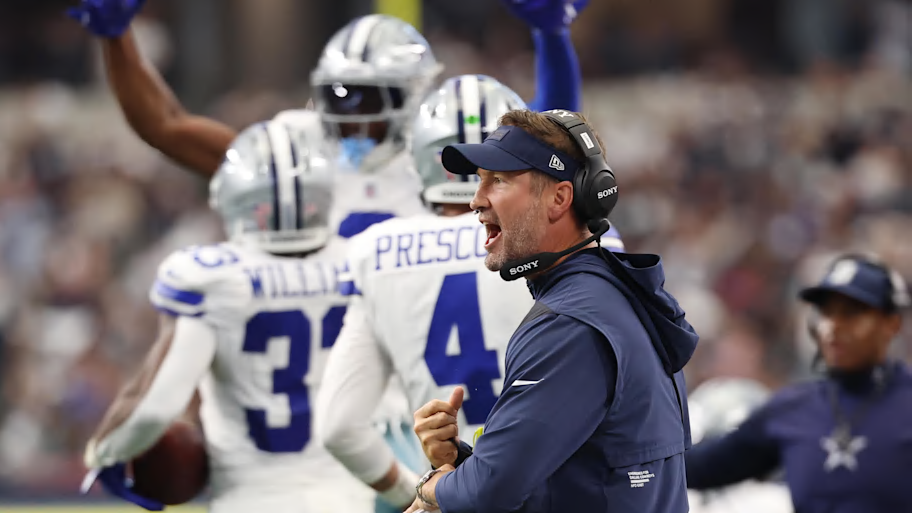
Dallas Cowboys
The Cowboys are coming together—and wins like Sunday’s 40–37 thriller over the Giants count in that regard. I know that Giants team may not be going to the Super Bowl. Or even the playoffs. But they played tough and desperate, and were resourceful behind Russell Wilson, and Dallas had answers every single time.
And how it happened really starts with a story from practice on Wednesday.
Interesting enough, that session looked a little like Sunday’s game, with some really leaky pass defense giving way to big, downfield plays. So afterward, first-year coach Brian Schottenheimer gathered the team to drill down on what the staff felt the group needed to improve on. Then they broke, and out of the corner of his eye, Schottenheimer caught something else materializing nearby.
“Lo and behold, it was Kenny Clark,” Schottenheimer told me, from his backyard Sunday night. “He’s been here nine days and was very much matter of fact, being authentic. That’s what I preach to our guys, man—I don’t want to put CeeDee [Lamb], Dak [Prescott], or [Kenneth] Murray in a box, man. Be who you are and be authentic. And he was leading the group today. Big sack and very consistent for us. You can see why Green Bay loved him.”
Of course, it took a whole lot more than just that to beat the Giants on Sunday.
Namely, a kicker with a superhuman leg. And a coach who believed in him.
Before Sunday’s game, Schottenheimer and Brandon Aubrey were discussing the line-to-make for field goals against the Giants, inside AT&T Stadium. Aubrey said if the offense got to the 50, he’d be fine—meaning he was comfortable kicking field goals from 67 or 68 yards out. “I’m like, What?” Schottenheimer said. “He said, No, seriously, the 50 and we are just fine.”
So with the team at the Giants’ 49, and New York up 37–34, Schottenheimer sent in the call “Slider” to Prescott. They’d screwed it up at the end of the first half, but it was the best play to get a little bit closer for Aubrey—that they didn’t feel the need to get much closer showed their confidence in him—to send the game to overtime.
On the call, Prescott would get a coverage indicator that would determine whether he’d throw the ball or hand it off to Javonte Williams. The coverage dictated the hand off, so Prescott checked to that, Williams quickly picked up three yards and slid to save clock, and Dallas called a timeout with five seconds left. Then, Aubrey boomed home the 64-yarder that he would’ve likely made from 70, and was about more than just the kicker himself.
“Part of the reason we re-signed [Trent] Sieg and [Bryan] Anger is because the three guys coming back together was important to us,” Schottenheimer said. “It’s not just Brandon doing this. It’s Trent snapping and Bryan holding—anywhere inside 70 we would’ve kicked it.”
From there, a beleaguered defense that yielded what looked like a dagger in the fourth quarter—Russell Wilson’s go-ahead bomb to Malik Nabers—bowed up in overtime, getting a stop, then picking off Wilson to set up Aubrey for the game-winner, his fourth field goal of the afternoon.
And soon thereafter, Schottenheimer got emotional leaving the field, looking up to his family’s suite, to see his wife and kids, and knowing his dad was looking down on him.
Moments after that, back in the locker room, he got the game ball from his quarterback.
“These guys saw in me the work ethic, the warrior mentally to fight to the end,” Schottenheimer said. “They had my back. We’ve built something pretty special here from a culture standpoint. And I’ll remember this one for a long time.”
He’ll remember it for how it ended, of course, and how it started too—with Clark addressing his new teammates, and setting the tone for the madness to come.
Philadelphia Eagles
I know it’s been said plenty, but the Eagles’ offensive line was the difference Sunday. Again. Just like in February, just like all of last year and just like in the championship season of 2017, too. And as much as everyone’s talked about Philly owning the line of scrimmage through both of its title-winning years, it can’t be said enough.
Sunday’s 20–17 win in its Super Bowl LIX rematch with the Chiefs was, to be sure, much different from the original.
The Eagles didn’t race to a 40–6 lead. They didn’t run all over the Kansas City defense. Jalen Hurts was efficient, not spectacular. Saquon Barkley was workmanlike and DeVonta Smith was the only skill player with a catch that went even 10 yards (though his two catches of 10-plus yards were big—the first was for 13 yards on Philly’s first touchdown drive, and the second converted a third-and-10 in the fourth quarter on the Eagles’ final scoring drive).
The effect of the offensive line this time around was as much psychological as it was physical, and made a 10-point deficit with seven minutes left insurmountable, even for the incomparable Patrick Mahomes and his Chiefs offense.
At that point, the Chiefs were punting back to the Eagles, down 20–10. Every one of the 73,558 folks at Arrowhead knew what was coming next. And while Kansas City wasn’t exactly helpless to stop it … close enough. Barkley churned out nine yards on the first two plays of the possession, putting Philly in third-and-1, and a push play then moved the sticks. Which meant that by the time Kansas City got a stop and forced a punt four plays later, all three of the Chiefs’ timeouts were gone and the clock had ticked under five minutes.
The Chiefs responded quickly, covering 72 yards in six plays, with Mahomes finding Tyquan Thornton for a 49-yard touchdown to draw the hosts to within a field goal. But at that point, with just three minutes left, Kansas City decided to try a low-percentage onside kick, rather than kick the ball away, given the concern that Philly would simply grind out the rest of the clock. Which was well-founded, because that’s what the Eagles did after the onside kick failed, using two push plays to gain the final yard to get Hurts into victory formation.
This, quite simply, is about Lane Johnson and Jordan Mailata at tackle. It’s about Landon Dickerson and Tyler Steen at guard, and Cam Jurgens at center. But the machine is bigger than just that—having replaced Mekhi Becton this year, Jason Kelce the year before that, Isaac Seumalo before that and, well, you get the idea. Johnson’s the mainstay, just like Kelce was before him, and Jason Peters before him. Howie Roseman and his staff find them, and, over the past 10 years, Jeff Stoutland has developed them under three different head coaches.
And late in the game Sunday, there was a little indication of just how that machine keeps purring. Between series in the fourth quarter, the quarterback, new OC Kevin Patullo and Stoutland made it clear about what they planned to do in order to run the clock out. The reason: Communication would be limited in noisy Arrowhead, so knowing what to expect would give the line a better shot to get calls as they came in. Sure enough, it worked to optimize how the group came off the ball and carried out the plan.
That’s one window into how and why this all keeps working the way it does for the Eagles,who put away the Chiefs for the second time this calendar year.
It may have looked different from the last time, but the idea was the same.
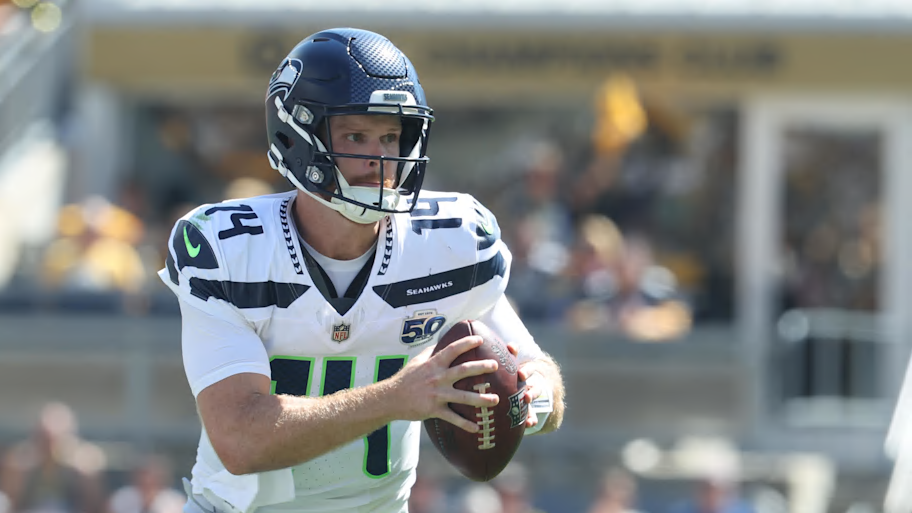
Seattle Seahawks
The story in Pittsburgh on Sunday was supposed to be one quarterback and wound up being the other. This one was set up to be Aaron Rodgers’s unveiling as a Pittsburgh Steeler. Instead, Sam Darnold, the new Seattle Seahawk, took center stage. Interestingly enough, he did it in an imperfect way that perfectly illustrated his growth.
After going 65 yards on eight plays to score a touchdown on the game’s first drive, the Seahawks’ offense spent the rest of the first half at Acrisure Field stalled out. Five possessions, two punts, a missed field goal, two Darnold interceptions and zero points. The Steelers carried a 14–7 lead into the half that, earlier in Darnold’s career, may have felt like a 40–7 deficit, with the quarterback spiraling.
But he’s now in his eighth year, still just 28, and with that comes wisdom.
“Going into Year 8, I’ve seen so many different situation—we have a lot of guys in our locker room that also have seen those situations,” Darnold told me. “You’re never out of the fight, especially with the way our defense played today. Our special teams also played lights out. And we were able to drive the ball down the field as an offense. Obviously, I had plays, miscues that turned into turnovers. But, other than that …”
Other than that, Darnold saw an offense playing efficient ball on first and second downs, converting third downs, and just needed to get out of its own way. His own patience in letting that come, rather than forcing it like he might have in the past, paid off.
Things turned. The Seahawks outscored the Steelers 24–3 in the second half, on their way to a 31–17 road win. Darnold was 9-of-14 for 137 yards, a score and no turnovers after the half and, just as important, the Seattle running game came along, too, picking up 78 yards on 16 carries (4.9 yards carry). And that was punctuated with a 19-yard touchdown run that Kenneth Walker III scored on third-and-goal in the fourth quarter, to put Pittsburgh away.
“That was awesome,” Darnold said. “Especially from my vantage point. Just being able to toss that ball to Walker and see him go from third-and-19, you never think you will score there. But I learned that lesson now. Walker has the ability to score like that, and having an O-line like we do makes it awesome.”
Add to that a defensive effort that held Rodgers to a 58.0 passer rating and the Steelers to just 72 yards rushing, and it looks like the Seahawks might have something in the NFC West.
“Our ceiling is high,” Darnold said. “We have to be able to continue to row, one week at a time, one day at a time. We have a lot to clean up. To be able to clean it up looking at it from a win is a lot easier.”
The Seahawks, for what it’s worth, get the Saints next, then play at Arizona on Thursday night in Week 4. That game could tell us plenty about both teams. Speaking of that …
Arizona Cardinals
For a good chunk of Sunday’s late-afternoon window, the Cardinals looked like a team more people should pay attention to. It’s Year 3 for GM Monti Ossenfort and coach Jonathan Gannon, and they’ve spent a million draft picks to get younger, faster and more dynamic across the board. They doubled their win total last year, going from four to eight, and on paper look like a team that should continue ascending.
You could see that Sunday. You could also see the other side of having youth.
The Cardinals got out to a 10–0 lead within 10 minutes, extended that to 20–3 at the half, and 27–3 in the third quarter, only to let the Panthers back into the game late. Carolina got it back to 27–22 late in the fourth quarter, then recovered an onside kick to get the ball with a shot to win at the wire—necessitating a late stop that Arizona knew it shouldn’t have needed.
“We have to be better,” said 18th-year veteran Calais Campbell, who was drafted by the Cards in 2008, and came back this year to put a capstone on his career and help the team grow up. “We have a lot of younger guys who are hungry. We are close but have a long way to go. We have moments we take the lead and then moments where we beat ourselves. We have to be better.
“The number one thing is to be consistent at a high level. But I love the mindset the guys have.”
That mindset was apparent at the start Sunday.
A Josh Sweat strip-sack and Zaven Collins recovery made it 7–0 after three plays. Cardinals edge Baron Browning picked off Bryce Young on the next possession, and the offense turned that one into a chip shot field goal for Chad Ryland to give the hosts a 10–0 lead.
“The first 10 minutes of the game was sweet,” Campbell said. “This defense was rolling, Josh started it off, we have so many guys that can make plays. Even when things didn’t go our way, we take turns making plays. … Everyone has that mentality and wants to make that play. Everyone is locked in.”
Trouble crept in late in the third quarter, when Young embarked on a 14-play, 76-yard touchdown drive, capped with a throw to Hunter Renfrow. The Panthers scored another touchdown on their next possession, and another one on the possession after that (those came on 12- and 14-play drives) to set up the successful onside kick.
And though Arizona did finally slam the brakes on a feisty Carolina group, there was plenty to learn from the mini-meltdown.
“I have to keep guys focused on the main thing and moments when you have to be great,” Campbell said. “As a leader, I take that serious. “
So … will the Cardinals be taken similarly seriously?
Next week should inform us on that, with games against the 49ers on Sunday and the Seahawks on Thursday, to help paint the picture of where Arizona stands in the NFC West.
“Getting to play football in games that matter against good teams,” Campbell said, “I’m ready.”
We’ll soon find out whether his younger teammates are, too.
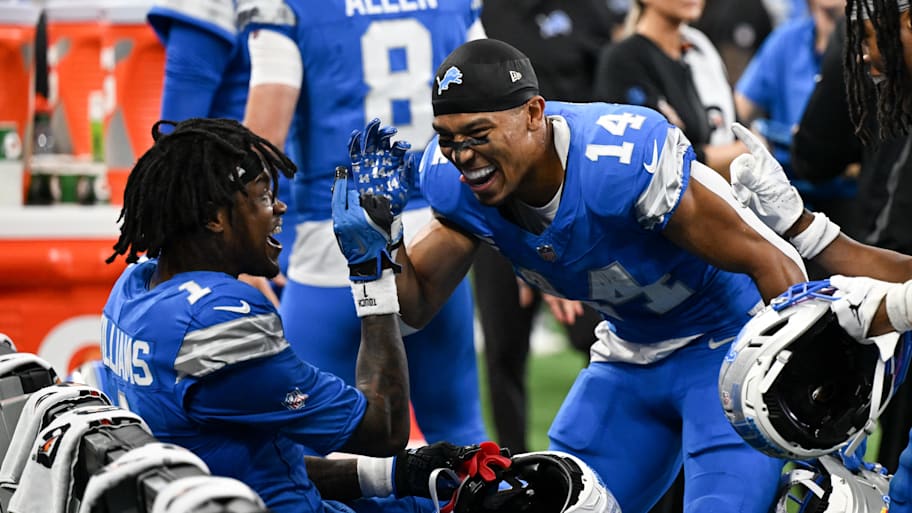
Detroit Lions
The Lions’ offense is going to be just fine. Detroit has too much talent for that not to be the case. That said, replacing coordinator Ben Johnson and center Frank Ragnow was never going to happen without a bump or two, and those have come in just the areas you’d expect.
And they seemed to come all at once in Week 1.
“It was a lot of miscommunications,” star running back Jahmyr Gibbs told me from the locker room, postgame on Sunday. “The Packers played a great game, and it was loud.”
The result? They scored their fewest points since October 2023, had their fewest total yards since October 2024, and had their fewest rushing yards since Christmas Eve 2022 in a 27–13 loss at Lambeau that was only that close because Detroit scored a garbage-time touchdown.
The prideful Lions heard about it all week. New OC John Morton isn’t Johnson. New center Graham Glasgow, who’s actually the old center, too, isn’t Ragnow. And so on.
Then, Sunday’s game started. The Lions covered 60 yards in five plays on their opening drive against the Bears. The last three plays of the sequence—Gibbs off left tackle for six yards, up the middle for five yards, then off left end for a six-yard touchdown—gave Detroit what it needed.
“It felt like old times,” Gibbs said.
It was also just setting the table.
“It was a very big point [of emphasis],” Gibbs said, “because we are a run-first team, so we run a lot of play-action—and without a run game, play-action isn’t going to be there.”
On this Sunday, pretty much everything was there for the Lions.
Gibbs finished with 94 yards and a touchdown on 12 carries, while David Montgomery grinded out another 57 yards and a score on 11 carries. Jared Goff had a near-perfect passer rating, throwing for 334 yards and five touchdowns on 23-of-28 passing. The line didn’t give up a sack and, per the NFL’s stat-keeping, allowed only four quarterback hits.
The Lions needed to make a statement coming back from Green Bay, but it was also their own fault that the Packers game went the way it did.
“[Today was] a couple runs going different—last week, you’d have half of us going one way, half doing the other,” Gibbs said. “I mean that’s going to happen, first game. I didn’t expect them to be superman. I knew we would be alright.”
And with an uptick in communication, they were.
Of course, that doesn’t mean the Lions can just settle in with this one in the books. But now that Morton has a Johnson-like afternoon under his belt, there’s something for everyone to build on. Gibbs actually thought Morton “did a good job last week.”
He then said, “The players have to go out and make the plays.”
And they showed Sunday that they could certainly still do that.
Green Bay Packers
The Micah Parsons blueprint is moving forward—fast. Green Bay’s plan for Parsons in Week 2 was to move forward cautiously. In his first week of practice with the team, he played about 50% to 70% of the team’s nickel snaps, and maybe a dozen reps per practice in passing situations, as he was physically ramped up. Leading up to Week 2, because the Packers were playing on Thursday night, they only had walkthroughs, and thus, Parsons didn’t really practice.
Still, because Parsons was hungry for more, Matt LaFleur and DC Jeff Hafley wanted to give him more. And they were able to do that.
The idea going in was to have Parsons deployed in a similar role against the Commanders, as he had been in Week 1 against the Lions. The hope was he could do a little more, as they’d check in with him in-game to see how he was feeling. Against Detroit, Parsons played 30-of-67 snaps (45%). Against Washington, he played 47-of-69 snaps (68%), a healthy uptick, and even a little more, with some run defense mixed in, which was unexpected.
Obviously, his impact is already being felt. The Commanders were in a slew of “double-chip” looks on passing downs, meaning they kept two skill players in to chip rushers on the edge, and sent only three guys out into the route. The Packers didn’t see much of that in 2024, and, for obvious reasons, that makes things a lot easier on the back end of the defense (which is huge with some of the changes Green Bay’s made at corner).
Then, there’s how offenses having to account for other guys has created favorable matchups for the Packers’ incumbent pass rushers. Through two weeks, Lukas Van Ness, Rashan Gary and Devonte Wyatt—all former first-round picks—are playing their best football. Part of that, of course, is a credit to those guys for their own work. But Parsons’s mere presence makes it easier for the other guys to get there.
So what’s next? Parsons’s first real, full week of practice. The players come back Monday, and the plan is to now integrate him as a full-time player on defense, which is kind of wild to think about, since he’s made such a noticeable dent already without being that. And once Parsons gets there, we’ll see how far the Packers’ defense can go.
Remember, it’s not just him. It’s those other former first-rounders on the line, too, and guys on the back end who, whether it’s because of his presence or not, have been flying around since Parsons arrived—players such as Edgerrin Cooper, Quay Walker and Javon Bullard.
Put it all together, and it sure looks like the Packers’ shiny new defensive toy arrived at just the right time—and has a lot of folks there feeling like it’s Christmas in September.
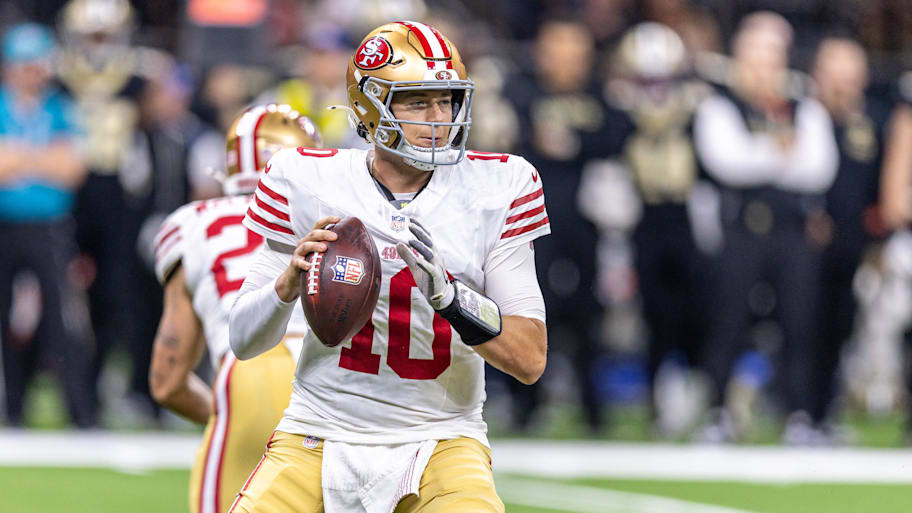
San Francisco 49ers
The Mac Jones storyline will be a fun one in San Francisco over the next couple of months. You know the background. The Niners dealt a king’s ransom to move up from No. 12 to No. 3 in the 2021 draft, with Jones as the leader in the clubhouse to be the quarterback they’d pick. Over the month between the trade and the draft, however, Kyle Shanahan’s deep dive into the group of prospects led him in another direction, and to the conclusion that Trey Lance would give him a chance to grow his offense in new ways, rather than just maximize what it already was.
Neither wound up making it. Both guys have already changed teams twice.
And in a twist, Jones’s broken NFL road has led him back to Shanahan, and he’s with the Niners’ coach by choice, having picked San Francisco in his foray into free agency. That came, of course, after washing out of New England, then being traded to his hometown team in Jacksonville, where he spent the 2024 season.
“I knew what I wanted, and what I was looking for,” Jones said while boarding the Niners’ team plane Sunday night. “I wanted to get to a proven system, and Kyle’s had that year-in and year-out. I’ve always enjoyed watching his offense, and ran a version of it in college. And I really just wanted to get back to playing like I know I can.”
What does he mean by that? Well, on Sunday, it added up to 279 yards, three touchdowns, no picks, and a 113.1 passer rating on 26-of-39 passing.
But it was more than just the numbers for Jones. It was how the timing of the offense, and how the detail of it—tying together a quarterback’s eyes and feet to work him through progressions—had a way of getting him to play faster in college. He figured it would work the same in the pros. On Sunday, it did.
“It’s about being ready, and being in the right place at the right time,” he said.
Jones felt like he was maybe most so on two of his three touchdown strikes Sunday.
The first of them, at the end of the first half, came on a call that had two receivers clearing out for Christian McCaffrey, who’d leak outside past them. During the week, Shanahan told Jones exactly how that one would play out, and when it did, Jones was very quick to trigger, trusting his coach’s knowhow and getting the ball to his back fast.
“It’s cool to experience that with a coach for the first time in my career,” said Jones.
Later in the game, and similar to the throw to McCaffrey, Jones followed Shanahan’s direction in decisively putting the ball in a short window to veteran Jauan Jennings, once Jennings crossed past linebacker Pete Werner into a dead spot in the Saints’ zone.
And that, really, was the story of Jones’s day. In his words, “doing it consistently is my talent.”
That, ultimately, is a lot of what Shanahan looks for in his quarterbacks, believing his offense has answers for just about everything within it, if the triggerman is smart enough and a quick enough processor to get to those answers with mammoths coming after him.
Which is why it might feel to Jones like this is where he was supposed to be all along.
Indianapolis Colts
Another Jones (Daniel Jones) did it again Sunday. The Colts’ quarterback, through two games, has now completed 71.4% of his passes for 588 yards, two touchdowns, no picks and a 111.1 passer rating. Indy is 2–0 with wins over the Dolphins and Broncos.
And, yes, some luck was involved this week, with a leverage penalty on Denver negating a missed 60-yard field goal from Indy kicker Spencer Shrader, and setting up his 45-yard game-winner.
Still, it’s fair to say that through two weeks Jones has been an absolute revelation.
Last week, Colts coach Shane Steichen told me that when the Colts were evaluating quarterbacks in the offseason, they loved Jones’s ability to find completions and, after asking around, knew he had a very high IQ for the game. But it’s hard to envision anyone having guessed he’d be off to this kind of start, even if it is still way too early to draw conclusions. What’s easier, for Jones at least, is to see why Indy’s been such a good fit.
“Just to speak to his philosophy, it’s to be aggressive” Jones said. “It’s forcing the issue—giving us chances to make plays when we get the looks. A lot goes into the game plan, what to expect, and the preparation is at an extremely high level. He spends a lot of time with me.”
That aggression, and preparation, showed up again Sunday, in Jones connecting on big plays down the field. There was a 41-yarder to rookie Tyler Warren in the first quarter, where Warren released through the middle of the line. Then there was a 44-yard connection on a go route to Alec Pierce, setting up a touchdown that drew the Colts to within a point at halftime.
And in between, Jones put the aforementioned ability to find completions to good use in spreading the ball around, with six different receivers (Warren, Pierce, Josh Downs, Michael Pittman Jr., Jonathan Taylor and Adonai Mitchell) registering multiple catches against Denver.
“A lot of credit goes to the coaching staff and how they utilize their skill sets,” Jones continued. “It’s preparing us and knowing what to expect, knowing when we are in a bad situation and how to get out of that. The credit goes to, one, the guys we have, and then our staff.”
So whether Jones’s honeymoon in Indy lasts another four weeks or four years, things are in a good spot now, and much better than where they were for him in New York, or for the Colts with Anthony Richardson as quarterback.
On Sunday, one of the NFL’s best defenses got to see, and fall victim to, that fit first-hand.
Quick-hitters
After a blistering Sunday, we’ve got plenty leftover. And we’ll get to those leftovers in our quick-hitting takeaways now …
• You don’t often see the circumstance you did in Patriots-Dolphins, where a Miami punt return touchdown was answered by a New England kickoff return touchdown (that touchdown from Antonio Gibson wound up being the game-winner). So, yeah, it was a weird one. However, the Patriots deserve credit for the resolve they showed in Mike Vrabel’s first win, getting big plays from Drake Maye, Rhamondre Stevenson, Marte Mapu, Milton Williams and Gibson when it mattered most.
• So about that players-only meeting in Miami? The Dolphins’ captains were direct with their teammates, telling them they needed to be accountable because the league would judge them regardless of who their coaches are or what their circumstances might be. And the effort was better Sunday. Now, they have to turn around and go to Buffalo, and it’ll be interesting to see how Mike McDaniel rallies the troops on the short week.
• The most surprising statistic of the week: Buffalo rushed for 224 yards, an average of 5.2 yards per carry, on the Jets’ defense. Running the ball hasn’t exactly been the Bills’ calling card, and New York’s defensive front is decent. Maybe it’s just a Week 2 aberration. We’ll know soon enough. And on the flip side, seeing Cleveland hold the Ravens’ vaunted run game to 45 yards on 21 carries was eye-opening, too.
• Davante Adams and Puka Nacua complement each other really nicely. And, sure, it’s the Titans. But how the Rams systemically took Tennessee apart, pulling away late, shows where the team is headed. L.A. rushed for 149 yards, Matthew Stafford posted a 105.4 quarterback rating, connecting with six different receivers, and the defense allowed 19 points, and only two field goals in the second half. The Rams’ trip to Philly next Sunday should be fun.
• Most of us figured we’d see Jaxson Dart play at some point this year. The plan was never to have him out there in Week 2. But there he was alternating snaps, at one point, with starter Russell Wilson—and doing so despite Wilson playing better than he has in a while. We’ll see what it means moving forward (the loss Sunday wasn’t on Wilson). However, it does seem like a sign that the Giants are considering their options at the position, and may do so even more so after LT Andrew Thomas returns. The Giants’ issue from here is the schedule.
• Neither J.J. McCarthy nor Michael Penix Jr. shined Sunday night, and that’s all right. We need to stop passing judgment on these young quarterbacks on a week-to-week basis. Penix wound up doing a little more in leading the Falcons to a win. And for what it’s worth, Kyle Pitts seems to have found new life with Penix at quarterback.
• People can point at Aaron Rodgers all they want (he’s been fine), but they should be looking at a Steelers defense that has allowed nearly 800 yards from scrimmage and 63 points over the past two weeks.
• Give Dave Canales credit. The Panthers kept coming on Sunday after a horrific start in that loss to the Cardinals.
• Brutal way for the Broncos to lose Sunday.
• Re: Arch Manning … don’t fall for people who built him up over the past nine months now tearing him right back down. He wasn’t seen by actual NFL evaluators as a No. 1 pick during the summer, mainly because they didn’t have nearly enough evidence to say that about him. Now, he could still become that. For now, though, he’s going through the process that a lot of young quarterbacks go through in learning to be a college starter. Even if some folks thought he’d be exempt from it.
More NFL on Sports Illustrated
This article was originally published on www.si.com as Week 2 NFL Takeaways: Jake Browning at Least Gives the Bengals a Chance.

